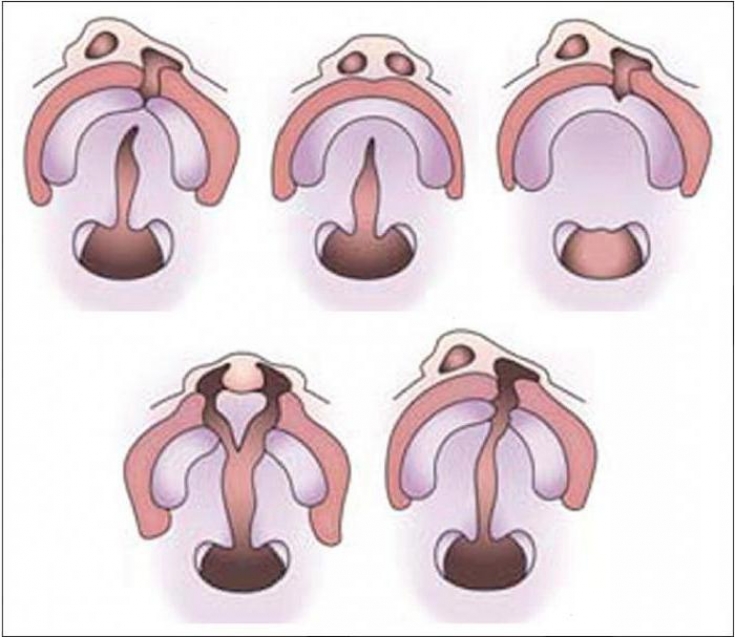The cleft palate is one of the most common birth defects and, according to scientists, its formation is most often due to the negative influence of various adverse factors on the body of a pregnant woman.
If these factors are concentrated in the first trimester of pregnancy, there is a very high chance that the newborn will have a cleft palate.
Today, this congenital defect is successfully corrected at an early enough age so as not to disturb the social adaptation of the child.
Why can a wolf's mouth form
A defect called cleft palate is a delay in the fusion of the processes of the upper jaw and the vomer (an unpaired bone of the facial part of the skull), which causes a splitting of the palate – soft and hard.
Cleavage can be complete or incomplete (only with a hole in the palate), with a bifurcation of the uvula due to a broken connection of the palatine processes, and also in combination with a cleft lip (cleft due to non-closure of tissues between the nasal cavity and the upper jaw) .
The formation of the cleft palate is explained by damage to a certain gene in the unborn child in the womb. From the eighth week of embryogenesis, the formation of maxillofacial organs begins. The palatine processes, formed from the rudiments of the inner surface of the upper jaw, gradually grow together with each other and with the nasal septum. If a genetic failure occurs during this period, then fusion does not occur.

Genetic failure can occur for the following reasons:
- smoking and drinking by the expectant mother;
- obesity in pregnancy;
- folic acid deficiency in the diet of a pregnant woman;
- severe toxicosis;
- stress, mental trauma;
- acute infectious diseases transferred to first three months of pregnancy;
- living in an ecologically unfavorable area.
How does a cleft palate appear
Difficulties for a newborn child lie in the fact that he has impaired functioning of the upper respiratory tract, the process of swallowing, pronouncing the sounds – all because of a cleft in the upper palate.
Such children often get sick because the air they breathe is not warmed or humidified. Newborns breathe poorly and cannot suckle, so they are significantly behind their peers in weight and development speed, and at an older age, children have big problems with speech, hearing, bite formation.

Principles of treatment of patients with cleft palate
Today, plastic surgery has a sufficient number of proven techniques for the correction of cleft palate. The age of the patient for surgical intervention is determined by specialists individually in each case. The most favorable period – 3 to 7 years old.
The essence of the operation is a phased, layered restoration of the anatomical structure of the soft and hard palate, correction of the attachment and connection of the palatopharyngeal muscles and the contraction of the nerve endings that provide them, stable fixation of the newly formed palate.
The upper lip is corrected if necessary. The number of required stages of surgical intervention can reach 7 or more.
Post-surgery rehabilitation includes taking antibacterial and pain medications, careful oral care, a special diet and an individual set of exercises.
In the future, physiotherapeutic methods of treatment are recommended in order to achieve a full restoration of the palatopharyngeal closure.









Add a comment